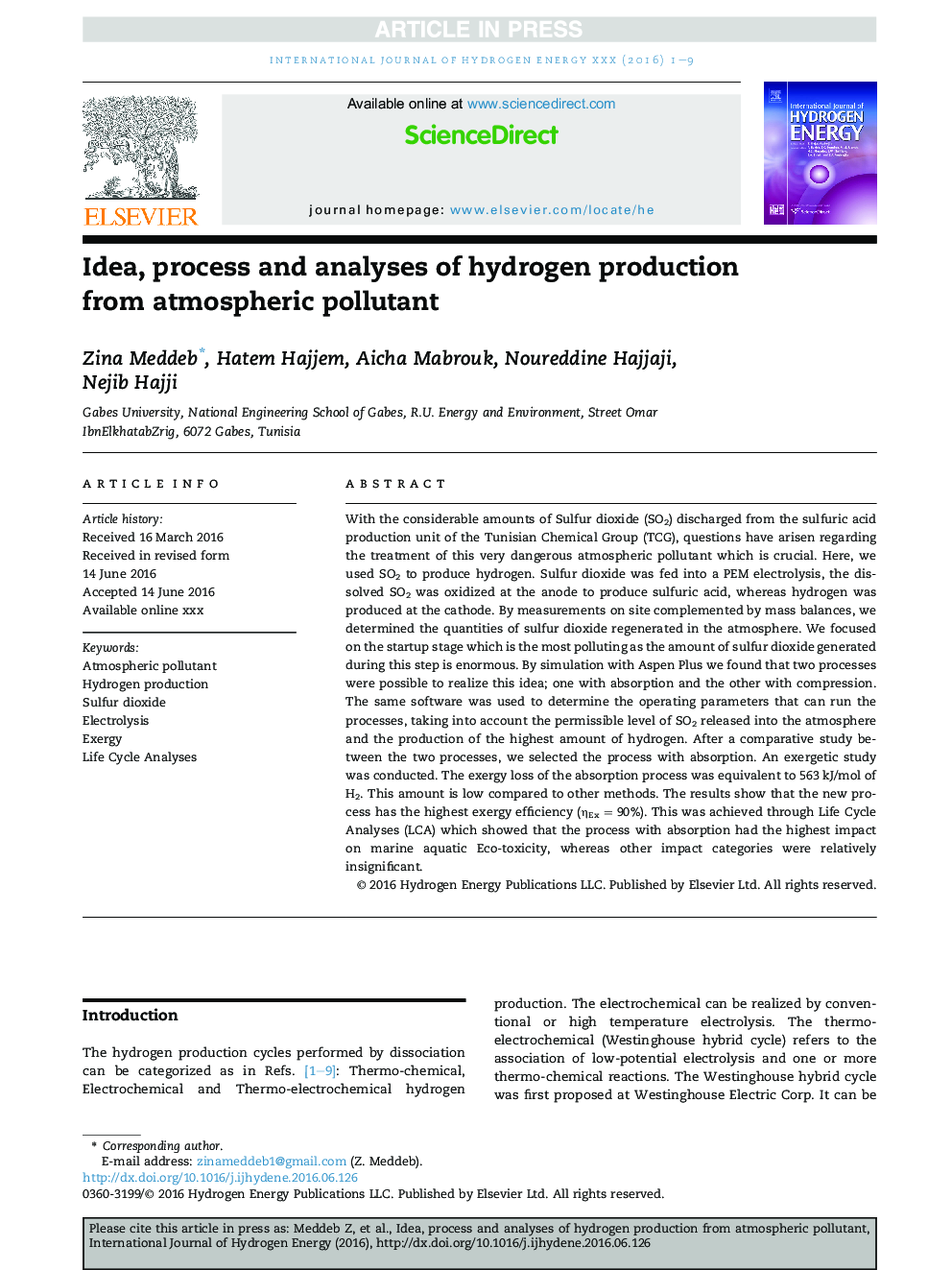| Article ID | Journal | Published Year | Pages | File Type |
|---|---|---|---|---|
| 5148017 | International Journal of Hydrogen Energy | 2017 | 9 Pages |
Abstract
With the considerable amounts of Sulfur dioxide (SO2) discharged from the sulfuric acid production unit of the Tunisian Chemical Group (TCG), questions have arisen regarding the treatment of this very dangerous atmospheric pollutant which is crucial. Here, we used SO2 to produce hydrogen. Sulfur dioxide was fed into a PEM electrolysis, the dissolved SO2 was oxidized at the anode to produce sulfuric acid, whereas hydrogen was produced at the cathode. By measurements on site complemented by mass balances, we determined the quantities of sulfur dioxide regenerated in the atmosphere. We focused on the startup stage which is the most polluting as the amount of sulfur dioxide generated during this step is enormous. By simulation with Aspen Plus we found that two processes were possible to realize this idea; one with absorption and the other with compression. The same software was used to determine the operating parameters that can run the processes, taking into account the permissible level of SO2 released into the atmosphere and the production of the highest amount of hydrogen. After a comparative study between the two processes, we selected the process with absorption. An exergetic study was conducted. The exergy loss of the absorption process was equivalent to 563 kJ/mol of H2. This amount is low compared to other methods. The results show that the new process has the highest exergy efficiency (ηEx = 90%). This was achieved through Life Cycle Analyses (LCA) which showed that the process with absorption had the highest impact on marine aquatic Eco-toxicity, whereas other impact categories were relatively insignificant.
Related Topics
Physical Sciences and Engineering
Chemistry
Electrochemistry
Authors
Zina Meddeb, Hatem Hajjem, Aicha Mabrouk, Noureddine Hajjaji, Nejib Hajji,
